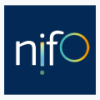This table here below aims at providing an overview of all the initiatives, such as the political communications, guidelines, and legislation, related to interoperability that have been put in place in Ukraine.

National Interoperability Framework
The National Interoperability Framework (NIF) is a set of standards, policies, and guidelines that ensure that information and communication technology (ICT) systems can communicate and share data seamlessly. It promotes the development of interoperable systems that facilitate data exchange and collaboration between different organizations and levels of government. The NIF provides a common language and a framework for ensuring that ICT solutions are compatible, secure, and reliable, which enhances the efficiency of public services and improves citizen outcomes.
Good Practices
This section provides examples at the national level in line with a selection of different thematic areas of the European Interoperability Framework (EIF). Further initiatives and good practices are available in the country’s Digital Public Administration Factsheet.
Ukraine's Ministry of Digital Transformation is activity promoting and pushing the use of open source solutions for state digitalisation projects. For instance, DIIA mobile application uses the PostgreSQL database management system and its design package is uploaded in free access and is used by all public administrations to design their information material. Smilarly, Vulyk information system uses Alfresco open source CRM solution. Also, since 2007, Ukraine has a legislative mandate requiring open access (OA) to publicly funded research. In this context, there is a strong community of practice for OA and the development of OA repositories by universities and research organisations, with over 40 repositories having been set up at academic institutions across the country.
Ukraine's Ministry of Digital Transformation implements the concept of 'state as a service' for its citizens so that all users can easily obtain public eServices avoiding any administrative burden. A multi-channel approach is used in services delivery. Currently, public services are available both online (on State eServices Portal Diia) and offline (796 Administrative Services Centers across the country). Moreover, the eServices Portal DIIA is a single point of contact to obtain online services. It acts as a one-stop-shop for citizens and businessess to obtain eServices. What is more, it contains the Public Services Guide, which is a Registry of Administrative Services and one of the DIIA portal's modules. It is a single database of administrative services designed to provide full and accurate information about public services. Each service in the registry is assigned a unique code that is used when users receive services through the DIIA portal and in administrative service centers (ASCs). As of 2024, the guide contains information on over 1,000 public services (including electronic and paper-based services). Data on these 1,000+ services is divided up into 17 categories of business activities and is arranged among 36 life events (e.g. starting a business, changing the place of residence, having a baby, or buying a vehicle). The guide provides citizens and businesses easily searchable and credible information about the services as well as how to obtain them.
In Ukraine, there are two interoperability systems which are used to ensure interoperability governance with a holistic approach across all administrative levels and sectors. According to Government Decree no. 357 on 'Certain Aspects on Electronic Interaction of Public Electronic Registries' and Government Decree no. 606 on 'Electronic Interaction of State Electronic Information Resources', all public administrations at national and sub-national levels interact between each other to provide public services via the TREMBITA national interoperability system. This tool was based on the Estonian interaction system X-Road and aims to foster the exchange of data between state information resources, so as to ensure the highest quality level of eService delivery system. As of November 2020, 46 state authorities of national level and 14 state authorities of sub-national level joined TEMBITA. The owner of the system is the Ministry of Digital Transformation of Ukraine. This interaction system guarantees state authorities and service centers access to the information contained in national registries and thereby will enable fast and high-quality provision of public services. Already during 2020, there were more than 10 milion data exchange transactions between state authorities via TREMBITA interoperability system.
Ukraine has a Registry of Registries which was established for the registration, accumulation, processing, analysis, and storage of information about state registries and information systems in the country. It contains information on all state registries including base registries. As of November 2021, there are 95 registries added to the system, inclduing those linked to business, land, and tax.
Decree No. 835 'on Approval of the provisions of datasets to be published in open data format' provides a definite list of datasets that have to be published in open data format by state authorities. Moreover, the Decree regulates the functionality of national open data portal. Currently, there are 39,963 data sets published in open data format. Dashboards have also been set up to monitor which state authorities publish their datasets in compliance with Decree 835. Starting from 15 October 2018, the European Open Data Portal began harvesting open data sets from the Ukrainian open data portal. The owner of the portal is the Ministry of Digital Transformation of Ukraine.

